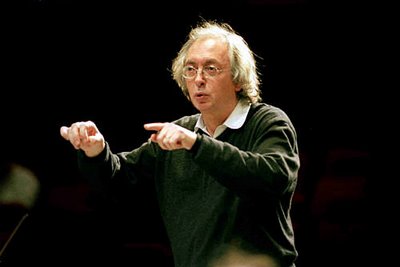| Available at Amazon: Lassus, Psalmi Davidis Pœnitentiales, Collegium Vocale Gent, Philippe Herreweghe (released on April 11, 2006) |
 Lassus uses the homophonic style predominantly, focusing not on contrapuntal development of melodic points but on the juxtaposition of somber harmonic masses. The harmony occasionally shifts to unexpected centers, not unlike the sometimes unsettling chromatic relationships in his Prophetiae Sibyllarum, composed by Lassus in the same period, the late 1550s. To avoid monotony, Lassus enlivens the homophony with polyphonic animation, sections that Herreweghe and his singers sometimes underscore by exaggerating the consonants of the words involved, as near the end of the third psalm, Domine ne in furore tuo (Psalm 37), where a thicket of sibilance hisses from the choral texture. The group compensates for the uniformity of style with broad contrasts of dynamics and texture. With a group of 14 singers at maximum size (arranged over the six parts as 2/2/3-2/2/3) and reduced to solo groups in some sections, there are many variations to divert the ear. In particular, the arrangement of singers helps the sonic augmentation that Lassus intends, by increasing his normal five-part texture to six parts in each doxology (Gloria patri) section.
Lassus uses the homophonic style predominantly, focusing not on contrapuntal development of melodic points but on the juxtaposition of somber harmonic masses. The harmony occasionally shifts to unexpected centers, not unlike the sometimes unsettling chromatic relationships in his Prophetiae Sibyllarum, composed by Lassus in the same period, the late 1550s. To avoid monotony, Lassus enlivens the homophony with polyphonic animation, sections that Herreweghe and his singers sometimes underscore by exaggerating the consonants of the words involved, as near the end of the third psalm, Domine ne in furore tuo (Psalm 37), where a thicket of sibilance hisses from the choral texture. The group compensates for the uniformity of style with broad contrasts of dynamics and texture. With a group of 14 singers at maximum size (arranged over the six parts as 2/2/3-2/2/3) and reduced to solo groups in some sections, there are many variations to divert the ear. In particular, the arrangement of singers helps the sonic augmentation that Lassus intends, by increasing his normal five-part texture to six parts in each doxology (Gloria patri) section.This worthy recording is quite different from the gold standard until now, a disc by the Hilliard Ensemble with instrumental support from the Kees Boeke Consort, recorded in 1985 and no longer widely available. The absence of instruments makes the sound austere, but the greater number of singers brings a range of colors suited to this highly expressive and virtuosic music. There are few moments of poor intonation, and an impressive uniformity of sound from low to high voices. You will not believe that 14 singers can make such a puissant, thick sound as the remarkable final "Sicut erat" verse in the seventh psalm.
Harmonia Mundi HMC 901831.32
No comments:
Post a Comment